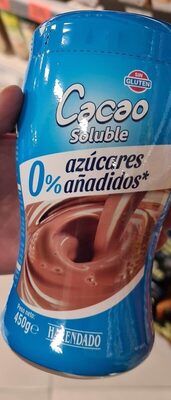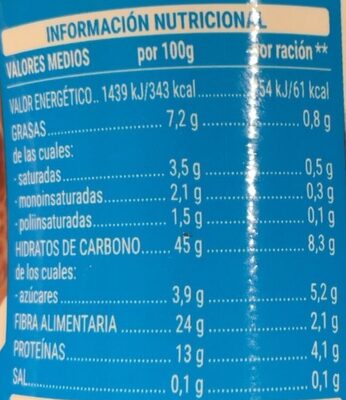Cacao soluble 0% azúcares - Hacendado - 450 g
Aquesta pàgina del producte no està completa. Podeu ajudar a completar-la editant-la i afegint-hi més dades a partir de les fotos ja disponibles, o fent-ne més amb l'aplicació de androide o iPhone / iPad. Gràcies!
×
Codi de barres: 8480000228499 (EAN / EAN-13)
Nom comú: Preparado alimenticio al cacao para desayunos y meriendas con edulcorantes, sin azúcares añadidos
Quantitat: 450 g
Empaquetament:
en:Green dot
Marques: Hacendado
Categories: Begudes, Cacau i derivats, Pols de coco i xocolata, Begudes instantànies, Cacau en pols
Etiquetes, certificacions, premis:
Lliure de gluten, Conté una font de fenilalanina, Punt verd, Sense sucre afegit, Amb edulcorants
Botigues: Mercadona
Països on es va vendre: Espanya
Matching with your preferences
Entorn
Petjada de carboni
Empaquetament
Transport
Report a problem
Fonts de dades
Producte afegit per kiliweb
Última modificació de la pàgina del producte per duhowpi.
La pàgina del producte, també editada per alia, elcoco, roboto-app, yuka.sY2b0xO6T85zoF3NwEKvlhV5dvyH8hTvKjXjxEKonuXSP4HlPv5t-pXeNqg, yuka.sY2b0xO6T85zoF3NwEKvlkdhatnAjxDuZx_gs2-U5PyFDobkQIBT_LTqKKg, yuka.sY2b0xO6T85zoF3NwEKvlmB9WdTfpw_eDkbtpRCh386ELKLpR_Ve7bHHEao, yuka.sY2b0xO6T85zoF3NwEKvlmhMb-fggjj_LDDQpk6n782hJabpS_9j4Nj7aKo.











